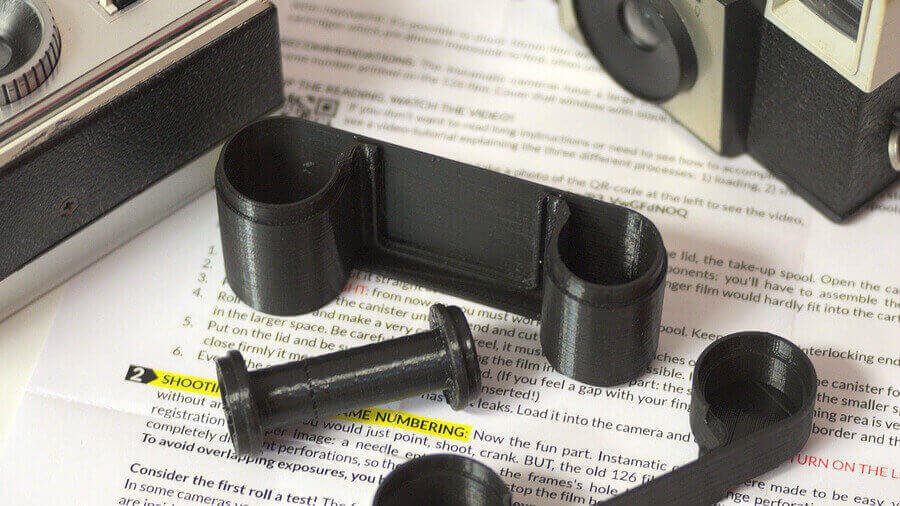
Key Takeaways
The 126 film format was introduced by Kodak in 1963 to simplify the photography process.
126 film produced square 28x28mm negatives, smaller than the standard 35mm negatives.
126 film cartridges made loading and unloading film easy, eliminating the need for threading and winding.
Kodak discontinued 126 film production in 1999, but some third-party manufacturers still produce it.
Modern alternatives to 126 film include digital cameras and instant film cameras like the Instax Mini Evo.
Introduction of 126 Film by Kodak
In 1963, Kodak introduced the 126 film format, also known as Instamatic film. The goal was to simplify the process of loading and unloading film, which was often a hassle with 35mm cameras. The 126 film came in a plastic cartridge that eliminated the need for threading and winding, making it incredibly user-friendly.
Rise and Decline of 126 Film Popularity
By the late 1980s, advances in 35mm film technology made the 126 format less appealing. Kodak stopped producing 126 cameras in 1988 and discontinued the film in 1999. Despite its decline, 126 film holds a nostalgic value for many photography enthusiasts who grew up using it. For more details, you can visit the All3dp.com
Characteristics of 35mm and 126 Film Formats

Film Dimensions and Negative Sizes
One of the most notable differences between 35mm and 126 film is the size of the negatives they produce. 35mm film produces negatives that measure 24x36mm, while 126 film produces square 28x28mm negatives. Although smaller, the 126 negatives still offer good image quality for casual photography.
Paper Backing and Cartridge Design
The 126 film is unique because it comes with a paper backing and is housed in a plastic cartridge. This design makes it easy to load and unload the film, eliminating the need for threading and winding, which is required for 35mm film. The cartridge also protects the film from light exposure, reducing the risk of accidental damage.
Sell Your Photos Online On Pixpa!
50% off https://www.pixpa.com?via=andreja72
Code: PXREF50
Availability and Market Presence
Today, 35mm film is more widely available than 126 film. Many manufacturers continue to produce 35mm film, and it remains a popular choice among film photography enthusiasts.
In contrast, 126 film is harder to come by. Kodak discontinued its production in 1999, and only a few third-party manufacturers produce it today. This limited availability can make it challenging for photographers who want to use 126 film. However, some enthusiasts still seek out 126 film for its nostalgic value and unique characteristics.
Cameras using 126 format film
|
Kodak |
Non-Kodak |
|---|---|
|
Kodak Instamatic 100 |
Agfa Optima 126 |
|
Kodak Instamatic 104 |
Fujica 126 |
|
Kodak Instamatic 500 |
Minolta Autopak 700 |
|
Kodak X-15 |
Rollei A26 |
|
Kodak Pocket Instamatic 60 |
Reflecting on the Legacy of 35mm and 126 Film
The legacy of 35mm film is undeniable. Its versatility, superior image quality, and widespread availability have made it a staple in both amateur and professional photography. Many iconic images of the 20th century were captured on 35mm film, cementing its place in photographic history.
On the other hand, 126 film holds a special place in the hearts of those who grew up using it. The ease of use and convenience it offered made photography accessible to everyone, regardless of their technical expertise. While it may not have the same professional applications as 35mm film, its impact on casual photography and family snapshots is significant. For those interested in a different film format, you might want to explore thedarkroom.com

Frequently Asked Questions (FAQ)
Can I still develop old 126 film rolls?
Yes, you can still develop old 126 film rolls. Many specialty labs and some local photo labs offer services to develop 126 film. However, the availability of these services may vary, so it’s a good idea to check with the lab beforehand. Keep in mind that the quality of the developed images may be affected by the age and storage conditions of the film.




Leave a Reply